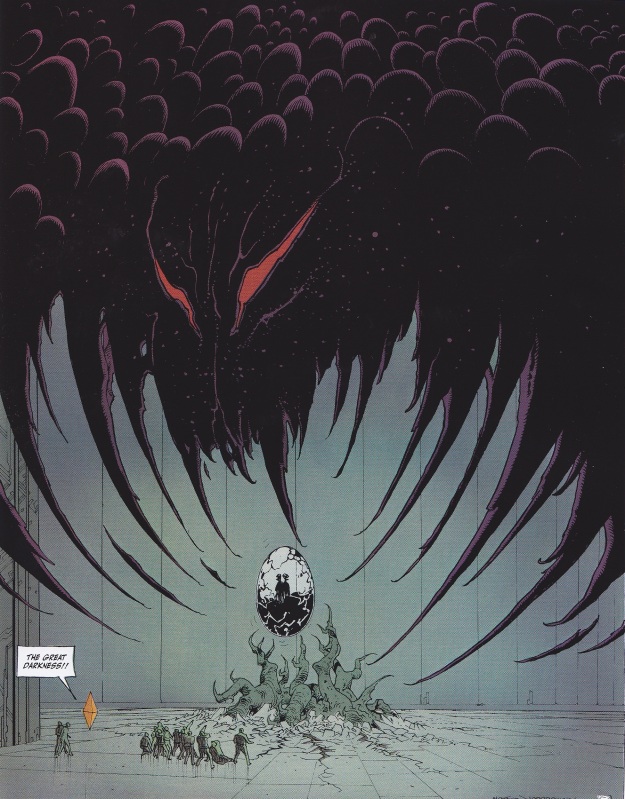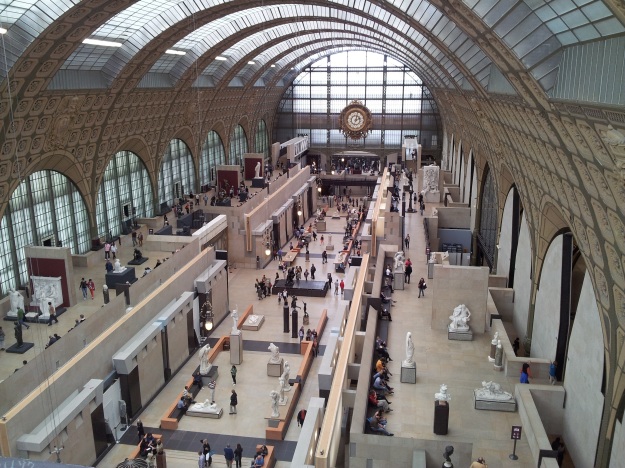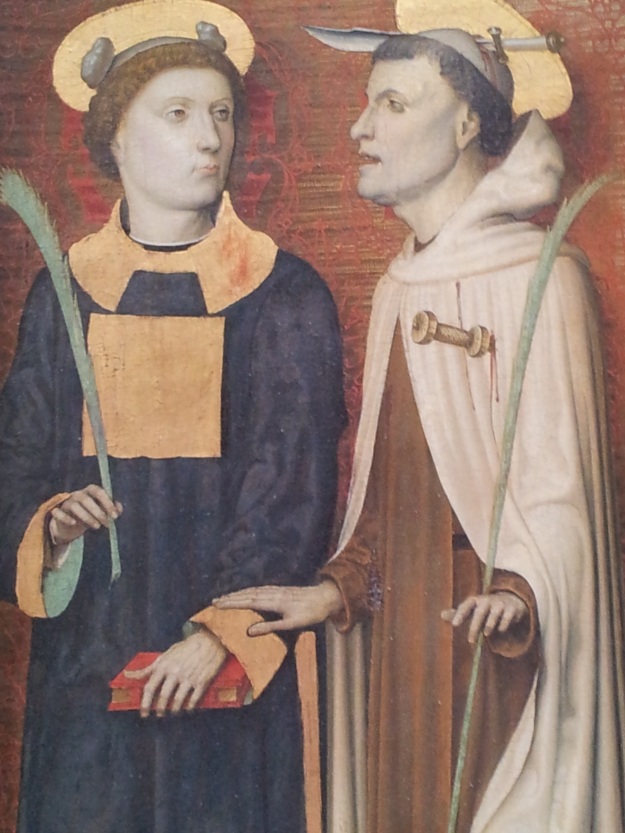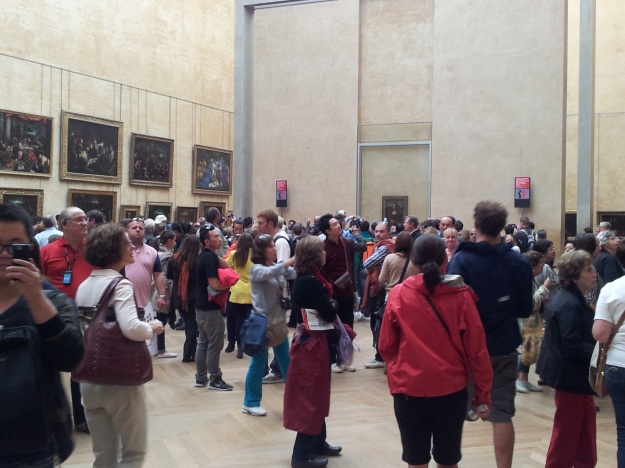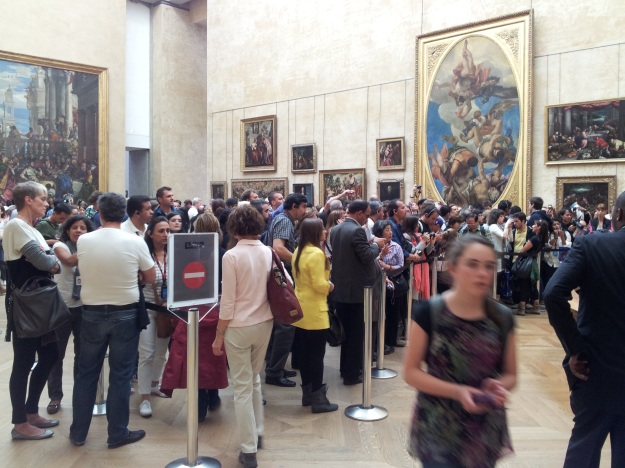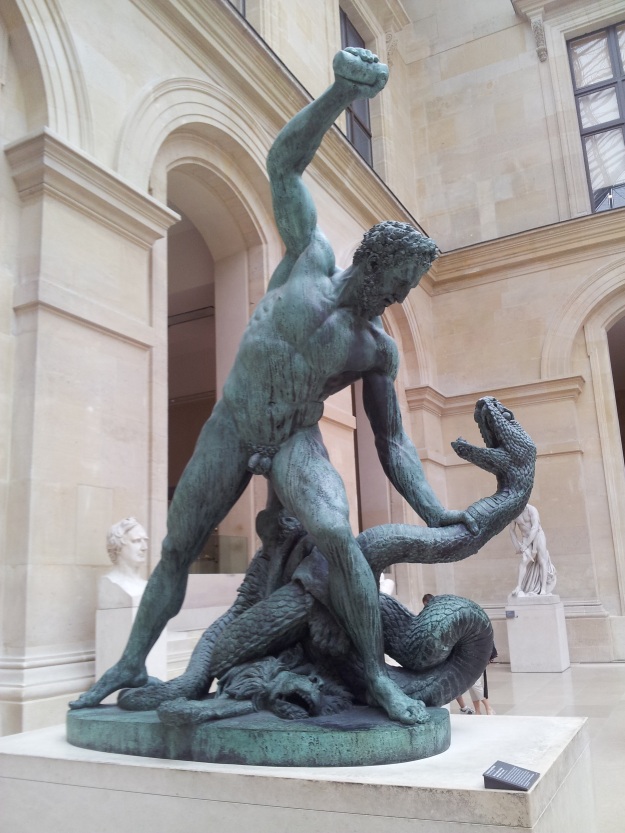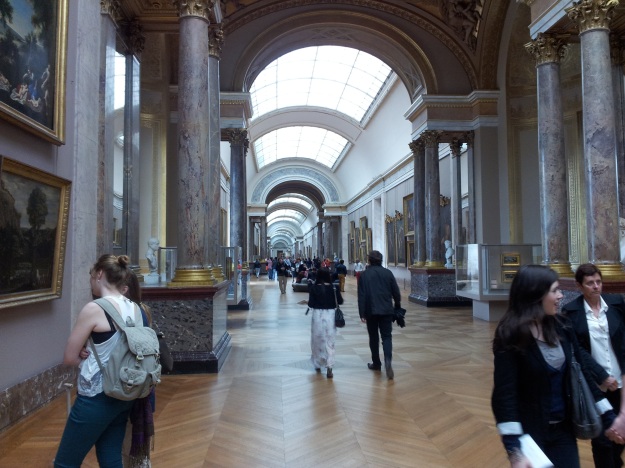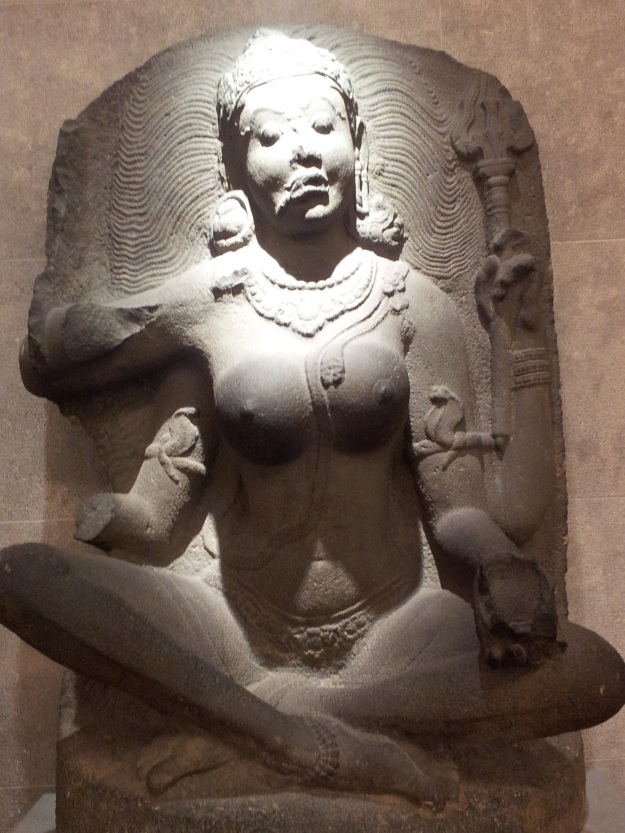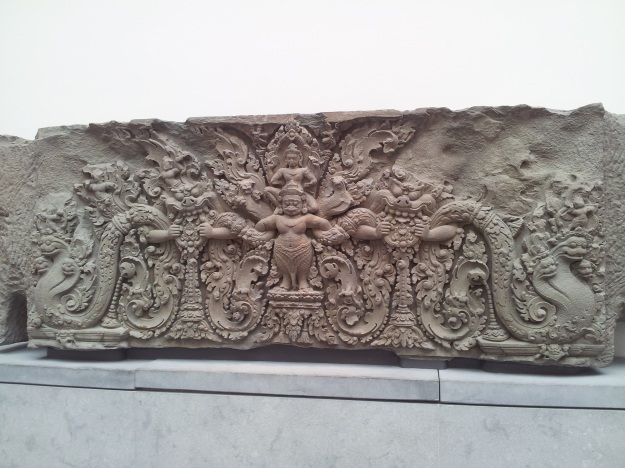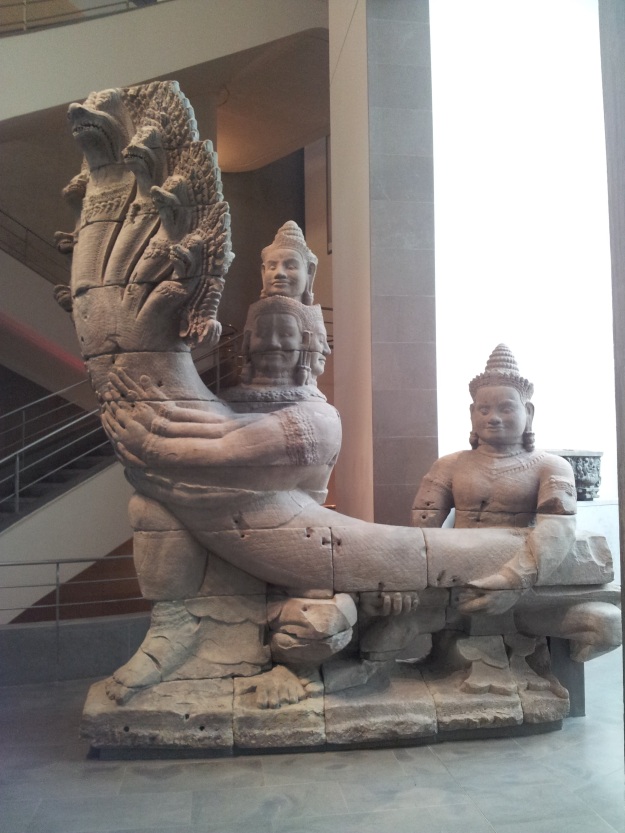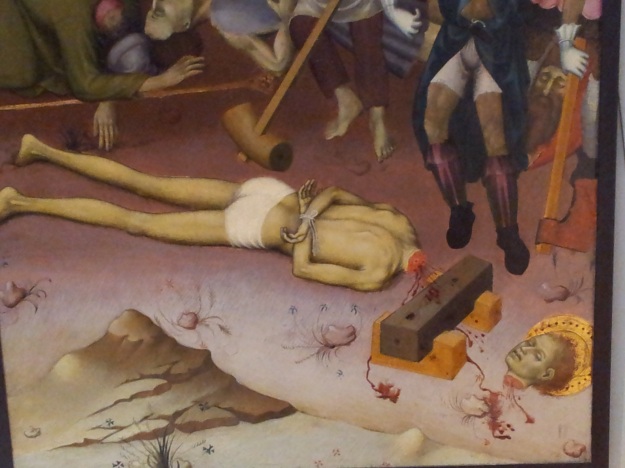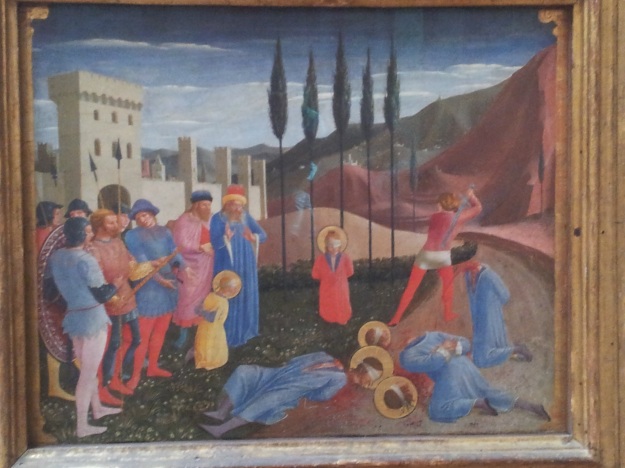Tag Archives: Art
Assorted Musée Thoughts
The Musée Rodin stressed that it received no funding from the French government, and while the outside areas and sculptures were excellent, it showed in the works inside. The building as a whole felt like it was part way through a renovation. The lighting and heating would vary wildly from room to room, which must have consequences for the preservation of the works. As a whole it felt like it hadn’t fulfilled its potential – while being able to see several attempts at the same subject, along with the preparatory studies, was revealing, that process could have been explicitly drawn out rather than being left up to viewers to work out what was happening. I imagine other visitors who, like me, know nothing about sculpture, would have loved to have an explanation of how the casting of bronzes occurs, and how the works in marble were formed.
At the other end of things was the Musée du quai Branly. This fully modern building housed anthropological collections from Africa, America, Asia, Australasia and the pacific. There was dim lighting throughout (for conservation reasons I guess) but here it had been used to good effect buy using spotlighting to give the objects dramatic lighting. There were video loops showing e.g. the traditional dances the masks were used in, as well as a really neat way to turn storage areas into additional display area simply by giving them glass walls. While the display was great there wasn’t much attempt at any narrative or chronology – the works were just grouped by geographical regions.
I really liked several paintings by Kupka in the Pompidou centre, even more so because I’d never come across him before.
The Musée Dórsay was my favourite, and that was largely because they had a number of paintings by Odilon Redon. It’s size felt about right too – enough art to feel full of riches, but not so much that it would be impossible task to look at everything. The Dórsay had blockbuster spaces – gallery spaces with impressionists and post-impressionists were far more crowded than the others.
In general the majority of art works drew their content from ancient Greece or Rome, or from Christianity. When you visit several galleries a day it can feel quite repetitive. Some of the pictures of nudes or semi dressed females felt a lot like they’re feigning being high brow or artistic but were actually painted to titillate, which makes the uproar around Manet’s Olympia seem hypocritical or reactionary.
Another obstacle is that it feels hard to accurately assess how these paintings would have been viewed and understood at the time they were painted. The number of images that exist has multiplied exponentially, and cameras and digital design mean that recording and editing images is a quick and cheap process. Not only that but there’s nothing like the same monism of culture and values that used to exist.
Paintings That History Has Been Cruel To
It’s traditional to show martyred Christian saints with the implements that killed them. With the painting below I can’t help but see the knife in the head as one of those novelty ‘fake arrow through the head’ dress ups. I also can’t help but imagine all the teasing he must get from the other saints for looking like that. I know it was painted with a serious intent, and that the fake arrow headgear didn’t even exist then, but I just can’t help it.
The Mona Lisa
The celebrity status of this is ridiculous – if somehow you could dissipate the camera wielding crowds, could you even ‘see’ the mona lisa anymore as just a painting?
Here are two pictures of the mob in front of the Mona Lisa. I don’t think it’s possible to take any other kind of photo without spending a chunk of time fighting through the scrum.
Statue Junk
Most of the statues I saw presented idealised human figures in dramatic and commanding poses with bodies that were beautifully proportioned and muscled. However this didn’t extend to their genitals. Why are these not ‘heroic’ as well? If it’s about modesty why not just fig leaf them, or add clothes?
The Louvre
The Louvre is immense. The scale of the building is huge, the size of some of the paintings is epic, and the sheer volume of paintings on display (as well as all the artefacts) is overwhelming. Trying to see everything in one day would be impossible.
There are many tour guides leading little tribes of tourists all with ear pieces to hear the guide’s commentary. Each of the guides have different little batons or flags that they held up for their party to be able to follow amidst the throng.
There are art works and items from so many countries and periods, and it prompted me to think about how they were all acquired. No doubt some were bought or discovered, but surely there must be a significant fraction that come from pillage and royal uh.. annexation. A number of the works hung in chapels or decorated church altars – were they replaced? Were they ransacked or merely sold?
There is a kind of flatness to many 15th & 16th century paintings – as if there are only two planes of representation – the foreground with the most important thing (and carefully composed staged positions), and then a second single plane that provides a backdrop. The images at the back are just reduced in size, and there is no attempt at connecting them to the forefront by e.g. perspective. It makes all those early side scrolling computer games seem weirdly art historical now.
There are a number of paintings by Pieter Boel depicting animals. In them the the rest of the canvas is filled with a single flat field of colour, instead of a still life background, or naturalistic surrounds – why? Were they all unfinished? If not, what was behind his choice to do that instead of using a smaller canvas or positioning them to take up the whole of the canvas. Because of that they stand out from the rest of the Flemish and Dutch paintings.
I saw Theodore Gericault’s ‘Raft of the Medusa’! It was the model for Goldie & Steele’s painting ‘The arrival of the Maori in New Zealand’ which hangs in the Auckland Art Gallery, and I spent a lot of time looking at when I worked there. You can see it here: The Arrival of the Maori
There were a whole lot of ‘seeing painting X in the flesh that I’d only known from art history books’ moments.
You can spot some of the 17th Century paintings without needing to check the label – the use of large areas of black plus dramatic lighting in them differentiates them from the airy, flat, evenly and brightly coloured paintings of the previous two centuries.
There was a single Turner, which in the midst of mostly realistic classical or religious or commissioned portraits seems like something that fell out of the future. In the Louvre is appears unclassifiable with no precedent, no followers. It was a welcome sight for a 21st century visitor sagging under the past. It was neat to come acroos an Anselm Keifer painting and sculpture tucked in one of the stairwells too.
As well as the paintings there are also floors and floors of Greek, Roman, Egyptian, Mesopotamian, etc etc artifacts – basically all the ancient cultures that seem so exciting as a child. The same overwhelming excess of things to look at occurs there too, but the Egyptian section was my favourite – the hieroglyphics seem so precise, as if they were somehow stamped onto the stone rather than carved.
Musée National Des Arts Asiatiques – Guimet Musée
Saints. Tougher Than Vampires.
All You Can Eat Art
I’m a bit of an art geek, so I bought a 6 Day Musee Pass for €69 and then embarked on an extended gallery crawl. I saw:
Musée national des Arts asiatiques – Guimet
Musée Rodin
Musée de l’Institut du Monde Arab
Centre Pompidou – Musée national d’art moderne
Musée du quai Branly
Musée du Louvre
Musée d’Orsay
Musée national de l’Orangerie
(I made multiple visits to the last three)
The Musée national Picasso was closed for renovations, and there were a couple of others that I wanted to visit but just didn’t get to.
I don’t know how to convey the sense of visiting them – there were a slew of them, with so many works inside them, and it was concentrated within a short span of time, so I won’t attempt any kind of accurate representation. Instead I’ll just post a few images and reflections. One side effect of gallery crawling was spending most of the day without natural light at all– the metro lines I were on were largely underground, and many of the galleries had few windows and preservation focused light levels.
